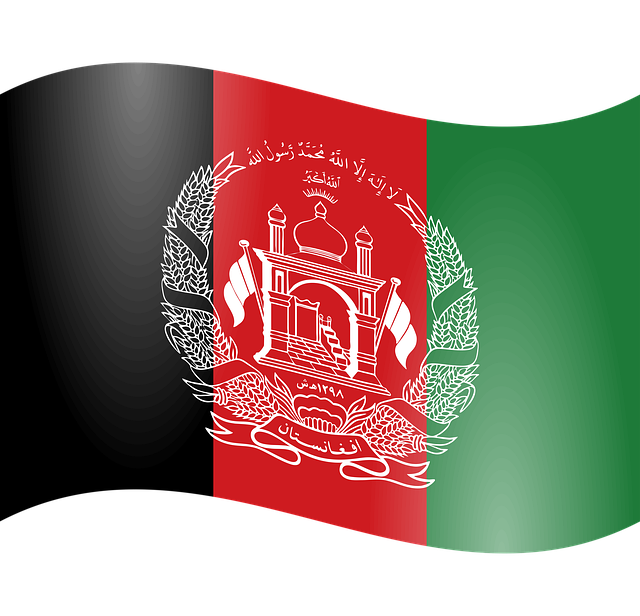By Tim Lambert
Ancient Afghanistan
Afghanistan has a very long history. The Oxus civilisation flourished from about 2,200 to about 1,700 in northern Afghanistan. This great civilisation vanished for unknown reasons.
However, most of the Ancient history of Afghanistan is that of one empire after another conquering the region. About 700 BC, Afghanistan was conquered by the Medes, a people from what is now Iran. However, about 500 BC, the Medes were conquered by the Persians, who then began to rule Afghanistan. However, the Persian Empire was, in turn, conquered by Alexander the Great in 331 BC. When Alexander died in 323 BC, his empire broke up.
His general, Seleucus, took control of part of it, including Afghanistan, founding the Seleucid Empire.
However, the Mauryan Empire, which ruled most of India, took control of southeastern Afghanistan in 303 BC. Then, about 256 BC, northern Afghanistan broke away from the Seleucid Empire and became the independent Greco-Bactrian kingdom.
However, in the 2nd century BC, the Parthians from Iran conquered parts of Afghanistan. In the first century AD, the Kushan Empire arose in Northeast Afghanistan. It ruled parts of Afghanistan, India, and Pakistan until the 3rd century.
However, in the 3rd Century, the Sassanids conquered the Parthians. They took over most of Afghanistan.
In eastern Afghanistan, Buddhism flourished while the main religion in the west was Zoroastrianism.
However, in the 7th century, the Arabs conquered the Sassanid Empire, including Afghanistan. The Arabs brought Islam. Yet, most Afghans did not convert to Islam until the 9th century, and Persian culture continued to dominate the realm.
Then, in the early 13th century, the Mongols conquered Afghanistan. However, after the Mongol leader, Genghis Khan, died, the Mongol Empire broke up. Afghanistan was split up into several small states.
Around 1381, the great Central Asian leader Timur or Tamerlane conquered Afghanistan. Tamerlane died in 1405.
From the 16th to the 18th centuries, Afghanistan was split between the Persian Safavid Empire in the west, the Indian Mughal Empire in the southeast, and the Uzbek Khanate of Bukhara in the north.
In 1736, the Safavid dynasty in Persia was overthrown by Nadir Shah. He conquered the whole of Afghanistan. Nadir Shah was assassinated in 1747. One of his cavalry commanders, Ahmad Shah Durrani, was a Pashtun (An ethnic group in Afghanistan). After the assassination, he returned to Afghanistan, and Afghan chiefs elected him Shah. It was the foundation of modern Afghanistan.
Modern Afghanistan
In the 19th century, the Russian Empire expanded southwards into Central Asia. The British ruled India, but they were afraid the Russians might take Afghanistan. The result was the first Anglo-Afghan War, 1839-1842. In 1839, the British invaded Afghanistan. They deposed the pro-Russian emir Dost Mohammed, and they replaced him with Shah Shuja. However, the Afghans rebelled and forced the British to withdraw.
The second Anglo-Afghan War took place in the years 1878-1880. The British invaded again. This time, Afghanistan was made a British protectorate. However, the British did not rule Afghanistan directly. The Afghans were allowed to control their internal affairs while Britain controlled their foreign relations.
In 1919, the Afghans invaded India. The British were forced to sign a peace treaty. They agreed to recognise Afghanistan as a completely independent state with control over its own foreign affairs.
The same year, 1919, women in Afghanistan were allowed to vote. In 1921, the first girls’ school in Afghanistan opened. Slavery was abolished in Afghanistan in 1923.
In 1926, the Emirate of Afghanistan became the Kingdom of Afghanistan. Amanullah Khan became King of Afghanistan. The king tried to modernise Afghanistan, but his policies met with strong resistance, and in 1928, a civil war began. King Amanullah Khan abdicated in 1929. Zahir Shah became king of Afghanistan in 1933, and he ruled for 40 years.
In 1953, Mohammad Daoud Khan became Afghanistan’s prime minister. He introduced some reforms. In 1957, women were allowed to attend university and enter the workforce.
In 1964, a new constitution granted women equal rights, and in 1965, four women were elected to the Afghan parliament. In 1969, Jameela Farooq Rooshna became the first woman judge in Afghanistan.
In 1973, Prime Minister Khan overthrew the King. He abolished the monarchy and made himself president. Under him, Afghanistan had close links with the Soviet Union. However, in 1978, President Khan was killed in a Communist coup. A Communist, Nur Mohammad Taraki, became president of Afghanistan.
The Communists made reforms, but they faced bitter resistance, and civil war broke out. The mujahideen were formed to fight the government.
The Communists also fought among themselves. Taraki was assassinated in 1979. The Russians invaded Afghanistan in December 1979 to prop up the Communist regime. The mujahideen fought a long war against the Russians, with help from the USA, Saudi Arabia, and Pakistan. The Russians really only controlled the cities, while the mujahideen controlled the countryside. The Russians withdrew from Afghanistan in 1989, leaving Mohammad Najibullah in charge of the country. However, his government was overthrown in 1992, and the country was engulfed by civil war. Different factions fought for control.
In 1996, a group called the Taliban captured the capital, Kabul, and most of Afghanistan. The Taliban introduced a rigorous version of Islam.
However, following terrorist attacks on the USA in 2001, America and its allies invaded Afghanistan and captured Kabul. In 2004, Hamid Karzai was elected president of Afghanistan. However, the Taliban continued to control parts of the countryside. When the US forces withdrew in 2021, the Taliban took over Afghanistan again. Women lost their rights.
Today, Afghanistan remains a poor country. Its main export is carpets and rugs. However, Afghanistan does have unexploited mineral resources. In 2025, the population of Afghanistan was estimated to be 49 million.

Last revised 2025